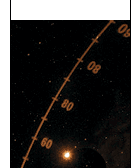

 |
|||
|
Explaining Colombia - Page 3 No sooner had Gaitan been declared dead than blocks of downtown Bogota were gutted and hundreds killed. In the countryside, one recorded incident would become iconographic of Colombian barbarity: incensed Gaitan supporters decapitated some prominent members of the rival Conservative Party and played soccer with the men's heads in a town plaza. The following year, a man born Pedro Antonio Marin took up arms in self-defense against the wholesale slaughter by Conservative henchmen of supporters of the rival peasant-backed Liberals who dominated his coffee-growing region. Marin would later take the name of a labor leader whom government agents beat to death – Manuel Marulanda – and build the FARC, which he cofounded in 1964, from a scraggly hit-and-run communist band into a potent force that by the mid-1990s was overrunning government military outposts.
A taciturn farmer's son with a sixth-grade education, Marulanda was a self-taught master military strategist. Cloistered in the jungle for a half century, he had missed the technological revolution but earned the nickname "Tirofijo," or Sureshot, for his skills with a rifle. As Latin America's other major rebel movements made peace or met with defeat, Marulanda managed to triple the FARC's size to at least 15,000 fighters and school a new generation of commanders. They were good students. The FARC now controls perhaps 40 percent of the Colombian countryside. It is a peasant army, its rank-and-file coming almost exclusively from dirt-poor campesino families. I met a number of FARC leaders after Andres Pastrana, elected president in 1998 on a peace platform, ceded a Switzerland-sized swath of southern Colombia as a free zone, to the insurgency as a condition for beginning talks to end a conflict that over the years has alternately simmered and flared. The 72-year-old Marulanda refused to grant interviews to mainstream international journalists. He considered us imperialist agents or worse. But we did get to know his senior commanders. Comandante Ivan Marquez joined the FARC in the 1980s because leftist students in Medellin like himself were being hunted down by death squads. He talked a conciliatory line. Nothing wrong with a market economy as long as the oligarchs allowed some redistribution of wealth in the countryside. There'd been talk of agrarian reform in Colombia for decades but never any action. One
senior cadre emblematic of the FARC's grievances was Jairo Martinez,
who said his father and three brothers were all killed the same
day during La Violencia by a Conservative gang. Rendered a refugee,
he didn't learn to read until he was 16. These were no Sandinistas. And they were nothing like the quixotic idealists of Colombia’s M-19 rebel movement, whose pyrrhic 1985 takeover of Bogota's Palace of Justice sealed their fate. Two
decades ago, the FARC might have mustered the intellect to create
rather than simply destroy. Thousands of fighters demobilized and
created a political party, La Union Patriotica. But the party was
decimated, some 3,000 members assassinated. "The FARC will never give up their weapons. That will take a generation," Álvaro Leyva told me. A Bogotano of aristocratic lineage, Leyva had been the key facilitator in government-rebel peace contacts. Whatever
goodwill existed in its leadership, the FARC is no centrally directed
monolith, and its ranks are peppered with resentment, bellicosity,
and materialistic opportunists. President
Pastrana had lost patience and dissolved the free zone. The genial,
patrician former TV anchorman had lacked the guile and maybe the
guts to deliver on his single-issue platform, and Colombia had only
become more lawless. |
|
back to top |